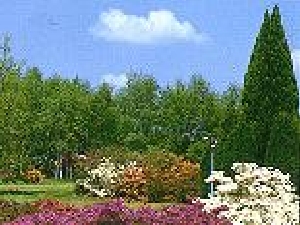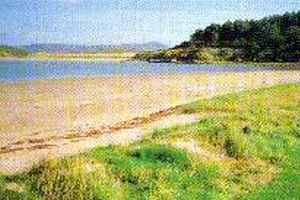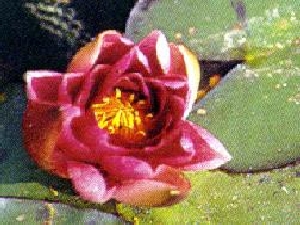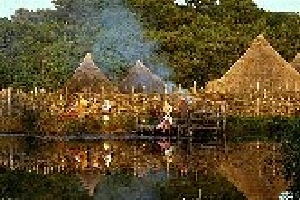Ireland’s enormous variety of scenery is showcased in an impressive array of parks. From orderly memorial gardens to rambling wooded areas, there is a park to suit everyone. Find your favourite in the selection presented below.
John F Kennedy Arboretum
New Ross, Wexford
Dedicated to the memory of U.S. president John Fitzgerald Kennedy, the arboretum is a plant collection of international standing. It covers 252 hectares on the southern slopes and summit of Slieve Coillte.
It contains 4,500 types of trees and shrubs from all temperate regions of the world, planted in botanical sequence. There are 200 forest plots grouped by continent. A road provides access to the summit at 271m from which there are panoramic views, and a visitor centre houses audio-visual displays and exhibitions.
Ards Forest Park
Ards, Donegal, Donegal
As well as being one of the most beautiful, Ards is certainly the most varied of Ireland’s forest parks. Bays, rivers, loughs, beaches, salt marshes, valleys, viewing points, deer enclosures and historic monuments are woven together by a series of fascinating nature trails.
Largely canopied by splendid deciduous and coniferous trees, the 481 hectares of the Stewart family’s former estate offers days of potential enjoyment for the walker, ornithologist, geologist, botanist, historian, child and nature lover. A map at the car park indicates the various trails and major attractions.
Roe Valley Country Park
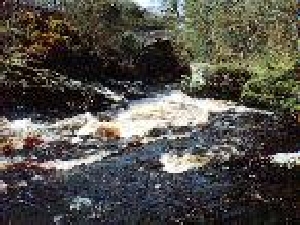
41 Dogleap Rd, Limavady, Derry
The Roe Valley Country Park is the ideal place to begin exploring the north-west area and its nature reserves. Set amidst the wooded banks of the river Roe where it winds its way down to the sea, the park is rich in wildlife.
Foxes, otters, badgers and many woodland birds abound. The area is rich in legends concerning the O’Cahans, who ruled the Roe Valley for centuries. In the more recent past, the valley echoed to the sound of gushing mill races, clattering water wheels and the rhythm of linen making machinery, some of which is displayed in a restored weaving shed, along with other interesting local artefacts. A relic of more recent history is the Power House Museum, where you can learn about the first hydro electric power in Northern Ireland. The Park’s main information point is the Dogleap Centre, where you will find a lively exhibition, audiovisual shows, and the Spinning Wheel (summer only).
Kilbroney Park
Shore Road, Rostrevor, Down
There are few parklands in existence as beautiful as Kilbroney Park. Here, mountain, stream, sea-lough and valley contribute to conjure up a scenic wonderland. The 97 acres which form Kilbroney Park lie close to the shore of Carlingford Lough in the shadow of the forest-clad Slieve Martin. Vast areas of open space, riverside walks, playing fields, tennis courts, play areas, an arboretum, barbeque and picnic areas are among the many facilities. The caravanner and camper are also well catered for, thanks to a well serviced caravan and camp site discreetly located in close proximity to an ultra-modern Reception Block.
Phoenix Park Visitor Centre
Phoenix Park, Dublin 8, Dublin
The main entrance to the park is on Parkgate Street in Dublin 7. The Phoenix Park combines extensive lawns, tree-lined pathways, nature trails, lakes, and ornamental gardens. Admission to the park is free, and visitors will often be treated to the sight of deer from the park’s herd of wild fallow deer.
Attractions within the park include Dublin Zoo, the Phoenix Park Visitor Centre, the Wellington Monument, the Papal Cross erected in memory of Pope John Paul II’s 1979 visit, and the presidential residence Áras an Uachtaráin.
Killykeen Forest Park
Cavan, Cavan
Woven around the lake and islands of Lough Oughter, Killykeen Forest Park features a number of marked trails ranging in length from 1.5km to 2.8km, each offering enchanted views and a diversity of habitat for the wild fauna.
Norway and Sitka spruce are the main tree species with a considerable amount of mixed woodland, including ash, oak, birch, sycamore, beech and alder. Stoat, badger, fox, grey squirrel, hedgehog, and rabbit are among the fauna which can be spotted here.
The extensive tree cover and abundant water attract a great variety of bird life, including herons, coot, moorhen, cormorant, great crested grebe, mallard, tufted duck, wagtail, kingfisher, warblers, and reed bunting.
The park contains sites of great historical interest including an Iron Age ring fort and Clogh Oughter Castle, which is visible from the Derinish Trail. The castle stands on an island and is a 13th-century de Lacy Castle later claimed by the O’Reilly chieftains of the area.
Heywood
Ballinakill, Laois
In 1906 the famous English architect and garden designer Sir Edward Lutyens (1869-1944) was commissioned by Colonel Hutcheson Poe to design a garden for his grand Georgian house at Heywood, where decades previously the Empress Elizabeth of Austria had been entertained.
The garden lies at the end of a long avenue that winds through an elegant landscape park laid out during the 1770s in the romantic-poetic tradition. Visitors enter the garden via a series of ‘garden rooms’ planted with herbaceous plants and bordered by clipped yew hedges.
Irish National Heritage Park
The Irish National Heritage Park depicts man’s settlement in Ireland from 7000 BC to the arrival of the Normans in the 12th Century. The park features reconstructed homesteads, places of ritual, burial modes, and long forgotten remains. Historical scenes are recreated with sights and sounds from nearly 9000 years ago. Visitors can discover how the Celts, Vikings and Normans came together, intermarried, and developed into the rich tapestry which forms Irish Society today
